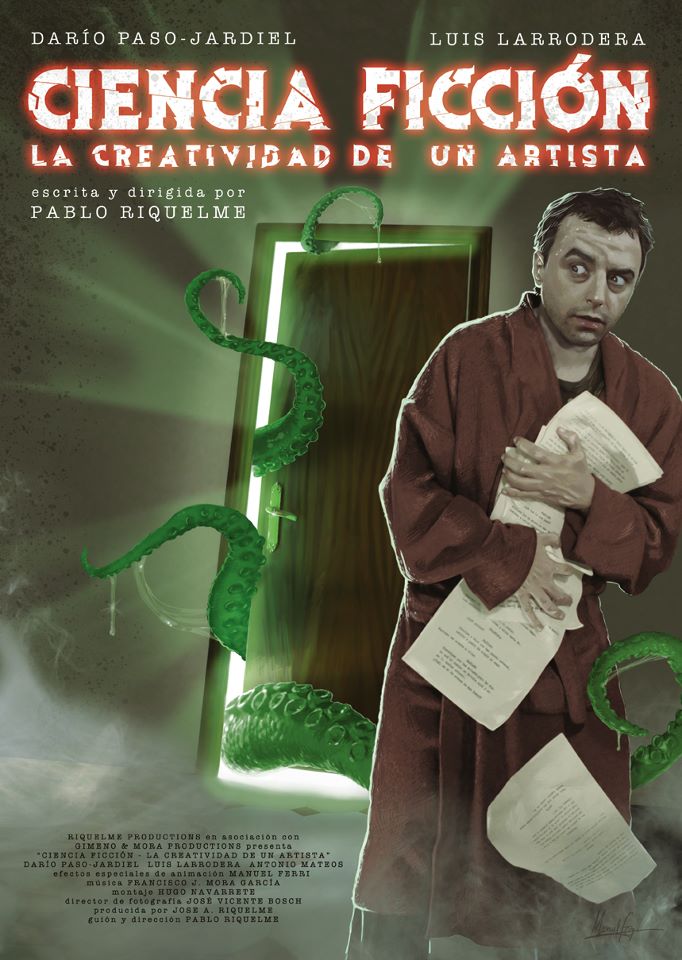Now Pablo Riquelme tells us about his film Ciencia Ficción: La creatividad de un artista:
Most of the short film was shot over the course of three days, primarily in the living room of a house, where the main character, Roberto —a screenwriter— works at his old typewriter. He’s been tasked with writing a script in a genre other than science fiction, but the monsters hiding in his wardrobe won’t let him. These creatures are trying to prevent him from losing his creativity.
Beyond the action set in the house, the film includes two dreamlike sequences —one on a beach and another in a mansion— which were filmed in a single day. So in total, the shoot lasted four days.
I wanted to make this film because I love B movies. I grew up watching Critters, The Fog, Night of the Creeps… but in Spain, science fiction tends to be overlooked. With this short, I wanted to comment on that reality. The main character is a sci-fi writer forced by his producer to work in other genres. He’s faced with a choice: write what the industry demands or stay true to what he really loves.

One important aspect I want to highlight is the creation of the monsters. They were brought to life using stop-motion animation—the same technique made famous by Ray Harryhausen in his iconic B movies, with skeletons, giant octopuses, and all sorts of creatures. This approach gave the film a different personality and, in my opinion, sets it apart from the typical short film.
There were many anecdotes during the shoot, but the most interesting one is that the two lead actors were never on set together due to scheduling conflicts. They filmed their scenes on separate days, but in the final cut, it looks like they’re sharing the same space. A similar thing happened with the famous Pacino–De Niro scene in Heat (Michael Mann, 1995).

The budget for the film was €9,000 (around $11,000 USD). We managed to make it happen thanks to the support of several private companies that believed in the project and contributed to it. In Spain, there are generally two ways to make films: you can wait for a government subsidy, or you can seek private investment, as we did. The problem with subsidies is that many productions end up delayed, incomplete, or canceled in post-production.
We shot with the RED ONE camera, which gave us a high-definition image and a lot of freedom in post-production. The cinematography was very clean, with lots of whites. In post, we toned down the whites, deepened the blacks, and gave the footage a greenish tint —a color that, for me, best captures the essence of sci-fi. We didn’t use 35mm for two reasons: first, because of our limited budget; second, because digital cinematography today arguably offers equal or better quality than film.
Film distribution is evolving. Distributors need to adapt if they want to stay relevant. Audiences don’t just watch films anymore —they devour them. They want immediate access; they don’t want to wait for international releases or pay $20 for a ticket or disc. For some, streaming might be the answer. There are many new paths for distribution.
Personally, I still buy films —lots of them, actually— but I admit, I always look for bargains in the DVD bin.


No comments:
Post a Comment